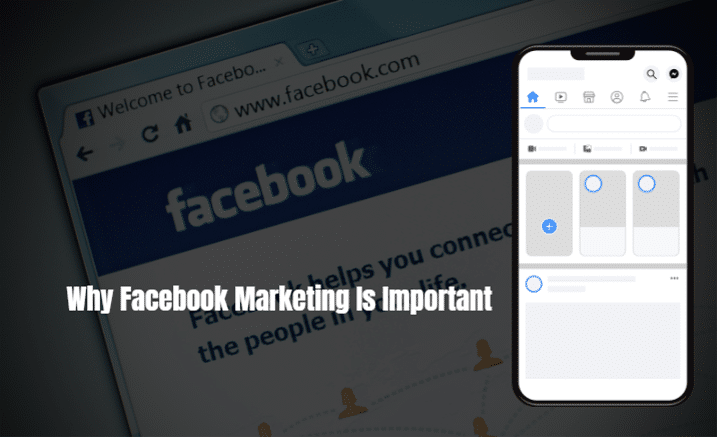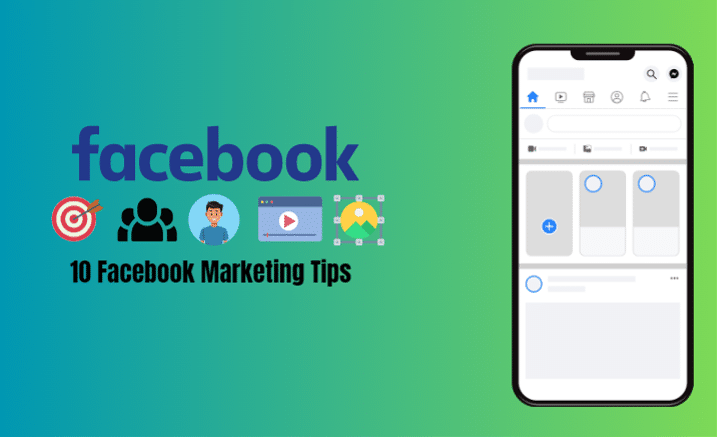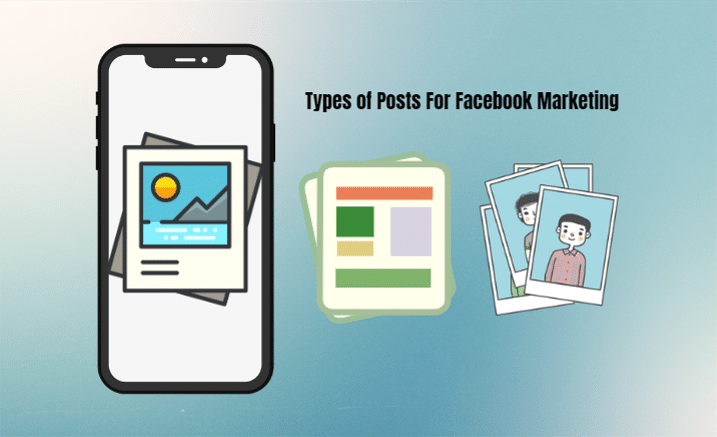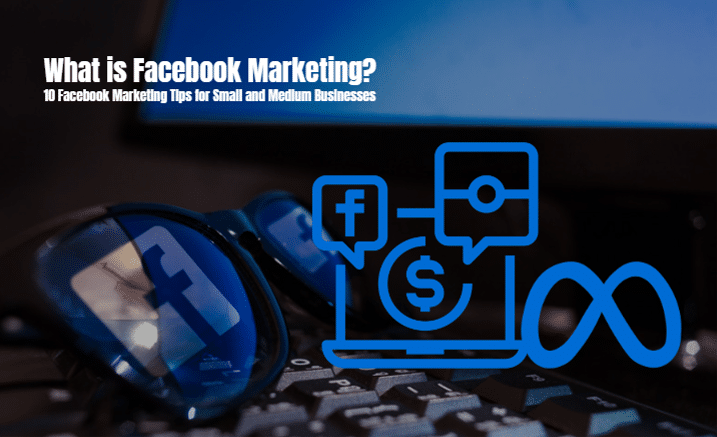Across the world, 2.98 billion individuals open their laptops or mobile devices each month and go to Facebook. Around a quarter of the world’s population visits the same social networking site daily.
When Mark Zuckerberg originally introduced the version of what would eventually become the most well-known social networking site in 2003, it’s doubtful that he could have foreseen such incredible reach.
Nowadays, almost everyone uses Facebook, and it has merged into daily life in the same way that television viewing has. This is a tremendous potential for marketers to connect with and interact with brand-new consumers.
Nevertheless, you can’t just create a business page and expect to gain millions of followers. It would be best if you had the plan to take advantage of these chances and have the most significant influence. This may seem difficult if you’re new to Facebook marketing, but don’t worry; it’s simpler than you would think.
Continue reading for an overview of some basics of Facebook marketing and some tips you can use to get started in the right way.
What Is Facebook Marketing?
Using Facebook as a social media platform to advertise your company to potential customers is known as Facebook marketing.
There are several paid and organic methods for doing this.
Paid Facebook marketing is leveraging the platform’s ad campaigns to target visitors and, ideally, persuade them to become customers.
When you publish useful material on Facebook intending to grow your following and interact with your audience, this is known as organic marketing.
Why Facebook Marketing Is Important?

If Facebook’s over 2 billion users weren’t enough to convince you to build your company page, perhaps the following will: More than 200 million companies already use Facebook’s free tools and apps.
More than 3 million of them are currently using the platform to advertise. As a result, there’s a strong likelihood that your rivals are already utilizing this social media platform to expand their brands. Getting on board immediately will offer you a significant advantage if they are not.
How To Set Up Facebook For Business?
The first step in starting your Facebook marketing campaign is to create a page for your company. You may make one for free. This provides users with a location to follow or like you, and it offers an opportunity for interaction with your clients (and future clients) and content sharing via postings.
Go to facebook.com/pages/create in your web browser and choose the category that best fits your business. For most individuals, it will most likely be “Company or Brand.”
Next, you’ll be sent to a page where you can type in your brand name, choose your company’s category, and add a bio. You can continually update your bio later if you’re having trouble deciding what to write.
You will also be given a chance to include a logo and cover picture. Again, don’t panic; these can be modified. The next step is to claim your special URL, which will probably be something like facebook.com/The Name Of Your Business.
Editing the information on your page is the important next step. Be sure to include any pertinent information, such as your address, service times, and other specifics that clients and potential clients might seek. Congrats! Your Facebook business page has just been established.
10 Facebook Marketing Tips
We’ve included 10 Facebook marketing ideas that practically any business may use to gain more love from both current and potential customers.

1. Establish your goals
What do you want to achieve with Facebook marketing? The three marketing goals of Facebook are exposure, consideration, and conversion.
2. Determine your target audience’s age
Who lives there? What degree of schooling do they possess? What problem can your solution address for them? The more details you know about your target audience, the better, as Facebook allows you to promote with amazing accuracy.
3. Perfect Your Profile Picture
First impressions matter.
Imagery is a crucial component of your Facebook strategy since your brand’s profile photo is the first thing potential followers will probably see when they engage with you through searches or comments.
With 180×180 pixels available, marketers should keep their profile photographs straightforward. Cramming a lot of text or an enormous image into a little area doesn’t exactly scream “stylish.” Moreover, simple, basic brand logos are compelling.
4. Spice Up Your Cover Image
Cover photographs are another important imagery to possibly “wow” visitors, similar to your profile picture.
Your cover photo, which occupies a substantial portion of your website, serves as the backdrop for everything below the fold. In addition to a high-quality image, cover photographs are great spots for marketing slogans and calls to action.
You don’t necessarily need to be a graphic designer to obtain the same type of appearance with your own page. With digital marketing tools like Landscape, you can create a sophisticated brand cover in a flash. Also, Facebook just included cover videos to attract visitors.
5. Keep Native Video in Mind
Video content marketing on Facebook works well with the platform’s native video player and Facebook Live. It has taken a while for the video to take over.
Video is the best approach to entice followers to interact with your company more frequently since it is captivating, amusing, and capable of stopping scrolling users. However, it’s not as easy as just dropping an odd YouTube video into your stream.
6. Post More Than Just Links
Speaking of Facebook’s algorithm, doesn’t it sometimes seem like witchcraft? Although some postings generate little response, others get a tonne
One of the most important pieces of Facebook marketing tips for businesses hoping to appear in their followers’ news feeds is diversifying how your material is distributed.
To begin with, providing just content that promotes yourself won’t do much to enrage your present followers or attract new ones. Although there is nothing wrong with connecting to your blog or merchandise, your material shouldn’t come exclusively from outside sources.
According to conventional opinion, Facebook loves posts that remain, so to say, inside its borders. Because of this, it’s a wise choice to include text-based, image-based, or video items in your feed instead of often connecting out.
7. Pay Attention to Image Sizes
Facebook performs the bulk of the work regarding our pages’ general design and layout. So, you are responsible for optimizing the photos for your articles, links, and previews. Do you know how your Facebook page appears on a desktop vs. a mobile device, for instance? Are visitors who access your website on a smartphone losing out?
Social picture sizing for your complete Facebook page demands your attention, much like your profile and cover photographs. Simply said, don’t post links or haphazardly modify the appearance of pictures. Again, maintaining that positive initial impression is key.
8. Optimize Your Post Timing
Timing is everything on Facebook. What you post and when you post is a crucial aspect of engagement optimization. The majority of companies do best during the weekdays, according to Sprout’s optimal times to post on social media:
Posting in real-time is not necessary for optimizing your post timeliness, though. You may program your Facebook to automatically promote material during times of high engagement with the use of social scheduling.
Scheduling your posts in advance is necessary for businesses wanting to check off every need for a successful Facebook presence. You may publish when your followers are online the most, but you should also diversify your content production rather than just posting what comes along.
9. Explore the free tools on Facebook
There are several ways to share material on Facebook, including text, images, video posts, Stories, and live streams.
10. Keep an eye on your analytics
Be sure to oversee your social analytics as you practice these Facebook marketing tactics. Analytics assist you in optimizing your Facebook strategy in terms of which post types increase interaction by revealing the content that receives the most clicks and impressions.
It may be time to shift if you feel you’re going in circles or your audience isn’t expanding. You won’t know, though, unless you analyze your presence in terms of the numbers.
Types of Posts For Facebook Marketing
When it comes to marketing, Facebook has a tonne of post and paid ad choices available. Let’s start by reading the postings.

Facebook Marketing Post Types
What you want to achieve will determine the kind of posts you use for Facebook marketing. Among the more well-liked ones are:
- Text posts and status updates – are fantastic tools for starting discussions, disseminating knowledge, and instructing your followers.
- Picture postings – A terrific method to draw attention, photographs are important for gaining new clients.
- Video postings – Videos are an excellent method to engage your audience and drive the conversation.
- Facebook Live – You may use the platform’s live streaming features to communicate with your fans or show off your products.
- Utilize articles with direct links to your external website or blog. They come with a preview automatically.
- Stories – Similar to Instagram Stories, Facebook Stories are excellent for increasing interaction without interfering with your followers’ newsfeeds.
- Pinned posts – Stuck at the top of your page, these are excellent for extending the reach of top-performing articles or communicating important news, special offers, or occasions.
What Facebook marketing advice is the most important to you?
An extensive page redesign is not always necessary to fine-tune your Facebook marketing. In reality, businesses trying to outpace their rivals on Facebook might put several of these suggestions into practice right away.
Which of these pieces of advice would you personally try to put into practice first? Any other advice that we could have overlooked? Tell us in the comments section below!







